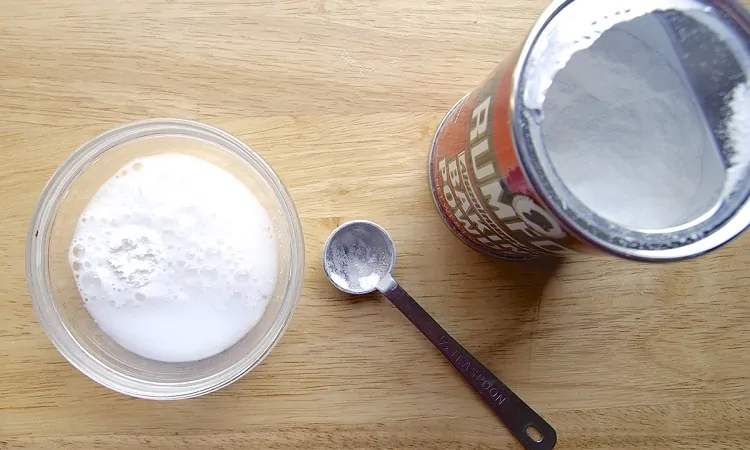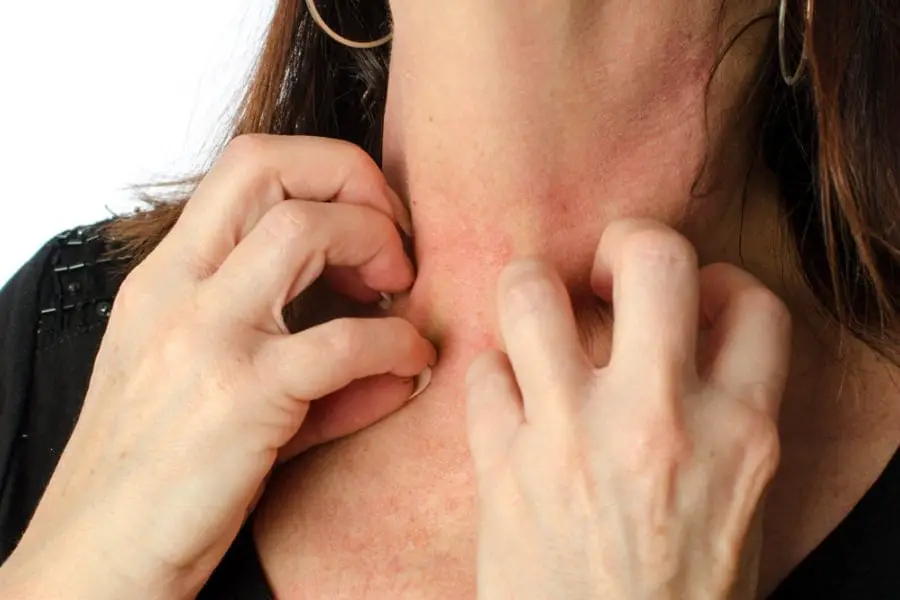Black mold is an extremely common and real threat to the health of you and everyone living in your home—even your pets!
Black mold symptoms range from asthma to congestion to skin problems.
Luckily, there are many ways to watch for and treat a mold problem before it gets serious.
In this article, we’ll talk about black mold in shower health risks, potential mold and asthma dangers, and other signs of a mold problem in your home. Then you’ll get a few tips on how to deal with that problem.
Table of Contents
Health Symptoms Of Black Mold Exposure In Humans And Pets

There are many symptoms of black mold that could be a sign of seasonal mold allergy or a mold infestation in your home.
Here are a few of the most common ones:
- Weakness and fatigue
- Sensitivity to light
- Frequent headaches
- Poor memory
- Lack of concentration
- Joint pain and stiffness when waking up
- Tingling, numbness or other unusual skin sensations
- Shortness of breath
- Sinus congestion
- Chronic coughing
The mold indicators above can be caused by many different conditions but if you are feeling all or many of them at once, it could be because you have mold (or worse – black mold) in your home.
Moreover, the risk of mold causing asthma is also very high especially when the black mold has been present in your home for a long time.
In addition to watching for any warnings of the above in yourself and your children, keep a watchful eye on your pets!
Be alert to any change in their normal behavior. Signs of a mold allergy in your pets are sometimes not easily recognizable.
Black Mold Symptoms in Dogs

- Frequent coughing, sneezing, or wheezing
- Difficulty breathing
- Bleeding from Nose
- Watery eyes
- Chronic ear infections
- Lethargy
- Loss of appetite.
It would be prudent to also check for the same mold allergy symptoms in cats.
Given the kinds of problems that a mold infestation can cause, you will be surprised at just how much more invigorated, alert, and energized you will feel the moment you eliminate mold from your home.
Finding and getting rid of black mold is one of the best things you can do for your health!
Tips For Dealing With A Mold Problem In Your Home

There are many ways to approach a mold problem. If you already have black mold growing in your refrigerator, shower or another part of your home, you’ll want to start by figuring out exactly where it is and then getting rid of it using one of the strategies below:
- Bleach. Bleach is one of the most widely used mold-killing treatments. However, it’s best for removing mold on non-porous surfaces. It can’t penetrate down into the pores of rocks, wood, and other materials. When using bleach, make sure you dilute it (1 cup of bleach to 1 gallon of water). And wear protective gloves and a respirator. And open all the windows in your home to ensure sufficient airflow. Bleach is toxic.
- Baking soda and vinegar. This is a popular combo for cleaning just about every tough stain or buildup in your home. It is totally non-toxic (unlike bleach) and it is just as effective.
- Hydrogen Peroxide. This is another nontoxic alternative to bleach. And it is also the one you want to use for porous surfaces because it can seep down and kill the mold growth at its roots. So drywall, wood, stone, and even clothing are best treated with hydrogen peroxide. But do be aware that is a mild bleaching agent, meaning it could bleach out clothes so we recommend spot testing before ruining your favorite coat!
Once the mold is out of your walls, carpeting, wood, and other surfaces, you will want to take steps to prevent it from infesting your home again. Here are some tips for doing that:
- Test your home. A DIY mold test isn’t very expensive and can be about as reliable as a professional inspection if you get the right one. You should use a DIY mold test kit in each area of your home that is most at risk for mold. That is, your kitchen, bathroom, and any other room where humidity levels tend to be higher or where there is a water connection.
- Get an air purifier. A HEPA air purifier can filter out particles as small as 0.3 microns. And since mold spores range from 1 to 30 microns in size, this means that a good air purifier can effectively eliminate pretty much all of the mold spores in the air. This means that you will not be breathing in those spores. And it also means that those spores will not be able to land on surfaces and begin growing patches of harmful black mold! So once you’ve cleaned the mold out of your house, you can keep it away with a great air purifier!
- Inspect home regularly. Check for leaks and pooling water around your home every couple of months so that you can tackle any potential threats before they lead to mold.
In the meantime, you can use mold allergy medications to help deal with the symptoms. But, remember that taking medication is not going to get rid of the mold in your home.
You need to also take steps to eliminate the cause of the problem so that you aren’t just dependent on medication for the rest of your life.
How Mold Can Affect Your Health

Exposure to black mold can wreak havoc on your health and well-being, causing a wide range of ailments to develop over time.
Worryingly, sometimes no symptoms are present, and a person may be completely unaware of the damage that is being done.
Some of the harmful effects of mold exposure range from rashes and eye irritation to more serious conditions, like asthma and neurological problems.
Other unpleasant side effects include headaches, muscle and joint pain, nasal congestion, fatigue, Legionnaires disease, and Hypersensitivity pneumonitis.
It is paramount that you inspect your home for mold to protect yourself and your loved ones from any adverse health effects.
If you find mold in your home, don’t delay in dealing with it – contact a mold remediation specialist to guarantee the mold will be treated and removed the correct way.
Final Word

Toxic mold syndrome and other side effects of mold allergy can be serious.
Chronic breathing problems and low energy may not seem like life threatening illnesses but they grow worse with time and they can severely impact the quality of life.
Mold allergy prevention is the best way to avoid the black mold exposure symptoms you read about.
It is also a way to avoid the high costs of huge home repairs that are often needed if mold is allowed to grow and spread freely.
So keep an eye out for these common mold allergy symptoms and do black mold allergy testing regularly in order to make sure your home is a safe and enjoyable place to be!
Recourses:

